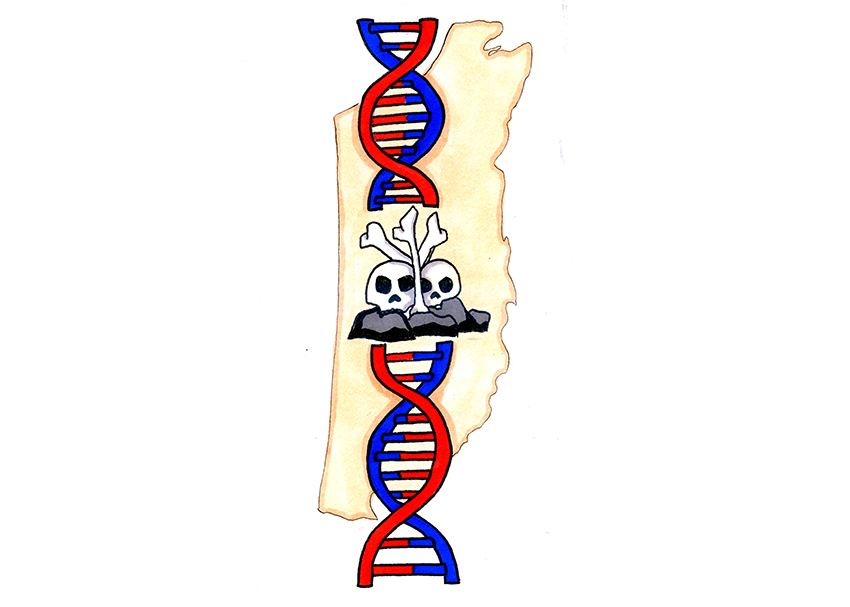UT researchers are analyzing the DNA of Central American skeletons to understand the history of British colonization. Graduate research assistant Lauren Springs, a graduate anthropology student recently received funding from the National Science Foundation and the Wenner-Gren Foundation for her research on genetic analysis of individuals in a small colonial cemetery in Belize.
The genetic portion of the project stemmed out of Springs’ master’s degree at Texas State University, where she was doing a bioarchaeological analysis of the cemetery.
“We were surveying a small cemetery that was historically important to early British settlers in Belize,” Springs said. “The cemetery had been destroyed by hurricanes, so it looked like an empty lot with a couple of memorial stones. We did an archaeological investigation to find some of the original graves, which we weren’t exactly expecting to find — but we did.”
Analyzing the DNA allowed Springs to look at the relation between 18th century Belizeans and contemporary, or presently living, Belizeans.
Initially, mitochondrial DNA was targeted, which traced only maternal lineages, or DNA inherited from a subject’s mother. The new funding will allow for a broader analysis of an individual’s complete set of genes, such as genome wide point mutations. Through tracing the mitochondrial DNA, Springs found the genetic makeup of the individuals in the cemetery had about 75 percent in common with European ancestry and 25 percent in common with African descendants.
The pattern flips when analyzing contemporary individuals. Modern Belizeans have more mitochondrial lineages in common with people of African descent, as well as more lineages that are in common with indigenous American peoples like the Maya.
The funding will allow for more in-depth genetic analysis, which will give insight into different lineages in a genetic history, not just maternal. This is done by analyzing DNA throughout the entire genome. Deborah Bolnick, an associate professor of anthropology at the University of Connecticut and a former associate professor at UT, said Springs’ research is important in understanding genetic history.
“Her work is really exciting because it will help us understand how genetic diversity patterns today have developed over time,” Bolnick said.
Springs said she is also trying to use different academic lenses to interpret who these individuals were to get an idea of identity, and give insight into the colonial system of the site.
“What else is exciting is looking at genetic data as well as archeological, ethnographic and historical evidence … putting the pieces together to get a better sense of how people were interacting,” Bolnick said.
Springs found evidence of non-European burial traditions, which links to African traditions and traditions, that may be related to Native American cultural practices, such as dental modifications.
“Even though it is known today as a British burial population, in the past, it looks like people were either identifying themselves or being identified by others in their deaths as non-British or British plus something else,” Springs said.
This overall research can provide insight to how social identities have changed.
“Seeing evidence of non-British mortuary practices and traditions gives us a window into how different groups of people were interacting and what kinds of relationships and identities were being built in an early colonial context,” Bolnick said.















